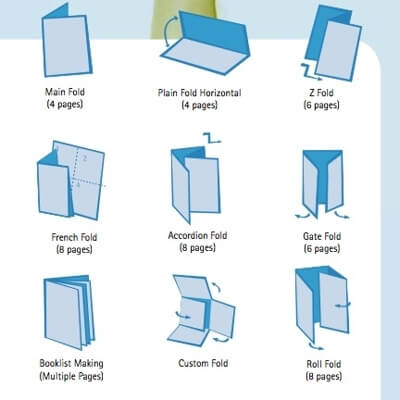 If you’re new to the world of business marketing and printed materials then you might find yourself a bit confused about all the different folding options available. Although you’ve probably held a hundred different leaflets and flyers over the years, there’s every chance you haven’t noticed the different types of folds they incorporated – that is – until now!
If you’re new to the world of business marketing and printed materials then you might find yourself a bit confused about all the different folding options available. Although you’ve probably held a hundred different leaflets and flyers over the years, there’s every chance you haven’t noticed the different types of folds they incorporated – that is – until now!
The good news is that the different options available are simple to learn – and with just a little instruction you’ll be able to better understand your print needs – and better able to communicate them as well!
3 Popular Types of Folds
You can choose from a wide range of common fold types to help maximise your message.
Whilst there are limitless ways to fold paper, when it comes to leaflets, flyers and brochures, there are three popular choices that are most widely used for business marketing.
- Gate Fold Leaflets – A gate fold flyer opens up like a double gate, with two flaps opening outward to reveal the bulk of your message inside. Once the ‘gates’ have been opened, this type of fold gives you a lot of room inside, which is great for content that can’t be easily condensed into a smaller area.
- Roll Fold Leaflets – The roll fold, also called the spiral fold is so called because each of the folds follows the same direction. The roll fold can have either two or three creases – leaving you with either six or eight ‘pages’ in your brochure or leaflet.
Note: When designing a flyer in this format, you need to consider that the ‘inner’ page – or the one which will be folded in first – will need to be a little shorter than the other pages to allow for the leaflet to lay flat when folded. For a six-sided flyer – you should aim to have the inner page 2mm shorter than the rest. - Z Fold Leaflets – This type of fold is a two-crease, parallel fold – in which the final result (looking from the top) resembles a Z. This type of fold is particularly great if you have distinctly different topics or products that you would like to showcase – as each fold (or page) is able to be viewed separately from the rest.




